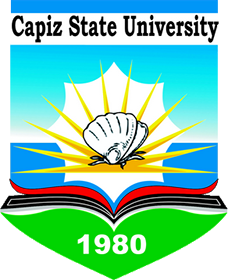Pag-ginawi: The Impact of Socio-economic and Traditional Practices of the Local Folks in Tourism Industry
| dc.contributor.author | Berondo, Ronilo | |
| dc.coverage.spatial | Tapaz | en |
| dc.coverage.spatial | Capiz State University | en |
| dc.date.accessioned | 2024-09-12T06:19:57Z | |
| dc.date.available | 2024-09-12T06:19:57Z | |
| dc.date.issued | 2023-01 | |
| dc.identifier.citation | Berondo, R. (2023). Pag-ginawi: The Impact of Socio-economic and Traditional Practices of the Local Folks in Tourism Industry. CapSU-Tapaz R&D Journal, 18(1), 54-59. | en |
| dc.identifier.issn | 1908-2843 | |
| dc.identifier.uri | https://repository.capsu.edu.ph/handle/123456789/733 | |
| dc.description.abstract | This study explored on Pag – ginawi: The Impact of Socioeconomic and Traditional Practices of the Local Folks in the Tourism Industry. Tourism has been regarded as one of the fastest-growing industries in the world. It is one source of income-generating projects which contributes to a country's economic growth and development. Thus, this study assessed the socioeconomic impacts and Traditional Practices of the Local Folks in the Tourism Industry, specifically in the Municipality of Tapaz, which covered the following characteristics: employment generation, increase in investment in the area by private and public organizations, entrepreneurial development, increase in the standard of living, public facility development, infrastructure development, social relation development, increase in cultural activities, increase in pride, cultural exchange, appreciation of local culture, positive change in people's lifestyle, behavior and values have a Neutral degree of responses perceived by the respondents. Moreover, negative characteristics of tourism also need to be examined, such as an increase in property prices. Nonresidents are getting benefits, increase in the cost of living, commercialization of activities, dilution of local languages, increase in crime, increase in social conflicts, social dislocation, increase in crowding and congestions, prostitution, inflation, pollution and loss of cultural identity, as these impacts would prove that the industry brings positive change in the lives of Tapaznon in the Municipality. Using the qualitative research design, local folks' informants from Tapaz, Capiz were purposively chosen based on the three generation test by Manuel (1955). Fieldwork, observations, informal and key informant interviews, and documentary and photographic analysis were the methods used. Verbatim data transcripts were analyzed using the general inductive approach (Thomas, 2006) and in vivo coding technique. | en |
| dc.language.iso | en | en |
| dc.publisher | Tapaz Satellite College, Capiz State University | en |
| dc.subject | Impact | en |
| dc.subject | Tourism industry | en |
| dc.subject | Tourism development | en |
| dc.subject | Tourism destinations | en |
| dc.subject | Local folks | en |
| dc.subject.lcsh | Tourism industry | en |
| dc.subject.lcsh | Tourism development | en |
| dc.subject.lcsh | Tourism destinations | en |
| dc.subject.lcsh | Local folks | en |
| dc.title | Pag-ginawi: The Impact of Socio-economic and Traditional Practices of the Local Folks in Tourism Industry | en |
| dc.type | Article | en |
| dc.citation.journaltitle | CapSU-Tapaz R&D Journal | en |
| dc.citation.volume | 18 | en |
| dc.citation.issue | 01 | en |
| dc.citation.firstpage | 54 | en |
| dc.citation.lastpage | 59 | en |

